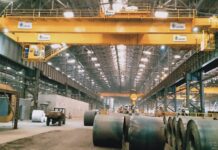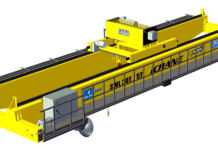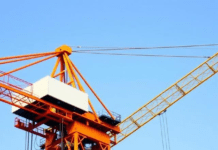The demand for heavy-duty lifting equipment is on the rise, and static cranes are at the heart of this momentum. Unlike their mobile counterparts, static cranes are fixed in one place, built for high-load capacity and long-term industrial use. These cranes are essential in construction, mining, ports, and logistics wherever there’s a need to lift and move massive materials efficiently.
What’s Driving the Growth?
As global industrialization and mega infrastructure projects continue to surge, the static crane market is poised for consistent growth. The market was valued at $13 billion in 2022 and is expected to reach $21.1 billion by 2031, growing at a CAGR of 5.5%. This reflects increasing demand from industries that require strong, stable, and reliable lifting solutions.
Here’s what’s fueling that growth:
Urban Development & Infrastructure Boom: From skyscrapers to smart highways, modern construction depends heavily on static cranes for lifting heavy building materials.
Expansion of Mining Operations: Mining companies rely on static cranes to move tons of minerals and ores with precision and safety.
Rising Global Trade: Ports are under pressure to handle more cargo. Static cranes provide the backbone for lifting containerized freight efficiently.
Automation & Smart Technology: With automation sweeping the industrial world, static cranes are evolving. IoT-enabled smart cranes now offer remote monitoring, predictive maintenance, and real-time analytics.
Market Challenges to Watch
Despite this bullish outlook, the market isn’t without its obstacles:
High Upfront Costs: Static cranes require a large initial investment, which can be a barrier for smaller companies.
Maintenance Downtime: These machines need regular upkeep. Any downtime could mean delays and cost overruns in critical projects.
Regulatory Hurdles: Compliance with safety and environmental standards differs across regions, demanding constant updates and inspections.
Industry Trends Shaping the Future
Safety Innovations: New static cranes feature cutting-edge tech like anti-collision systems, load monitoring, and operator assistance tools.
Green Crane Technology: As industries move toward sustainability, electric and hybrid cranes are gaining popularity for their lower emissions and fuel efficiency.
Smart Cranes with IoT: With sensors and GPS, today’s cranes are smarter than ever. They offer enhanced visibility, real-time diagnostics, and improved reliability.
The static crane market is evolving and fast. As industries push for smarter, greener, and safer material handling solutions, static cranes are stepping up to meet the demand. Whether it’s building mega cities or fueling global trade, static cranes are proving to be indispensable.





